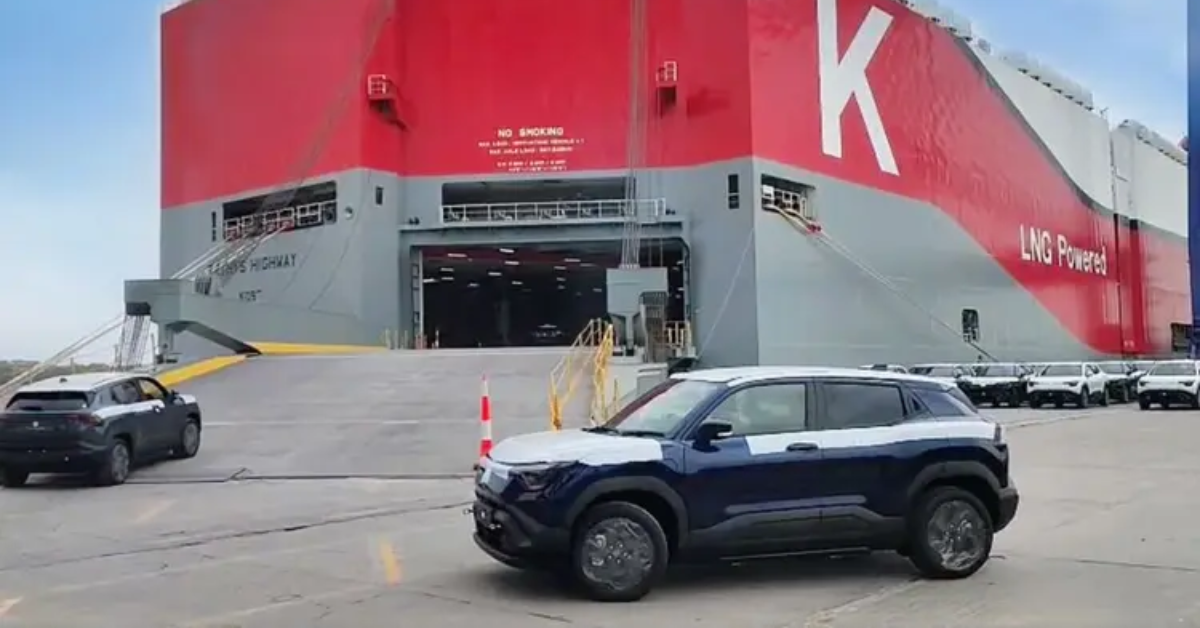India’s leading carmaker, Maruti Suzuki, has officially begun exporting its much-anticipated eVitara electric SUV to Europe. This marks a significant milestone not only for the company but also for the Indian automotive industry, which is now making its presence felt in the global electric vehicle (EV) market. With growing emphasis on sustainable mobility, the export of the eVitara is a proud achievement showcasing India’s ability to design, manufacture, and deliver EVs to international standards.
In this blog, we will explore the eVitara’s features, performance highlights, and the importance of this move for both Maruti Suzuki and India’s EV sector.
A New Era for Maruti Suzuki
For decades, Maruti Suzuki has dominated the Indian automotive market with its range of affordable and reliable vehicles. However, the global transition towards electric mobility compelled the brand to rethink its strategy. With the eVitara, Maruti Suzuki has now entered the EV space with confidence.
The decision to start exports to Europe highlights the company’s ambition to become a global EV player, not just a domestic one. Europe, known for its stringent emission norms and growing EV adoption, is the perfect testing ground for Maruti Suzuki’s first electric SUV.
eVitara: Design and Styling
The Maruti Suzuki eVitara has been designed keeping in mind both international and Indian customers. Its bold SUV stance, muscular wheel arches, and sleek LED lighting make it stand out on the road. Compared to the ICE (internal combustion engine) Vitara, the eVitara features a more futuristic design with closed front grille elements, blue accents, and aerodynamic touches that improve efficiency.
The interiors are equally impressive, with:
- A large touchscreen infotainment system supporting wireless Android Auto and Apple CarPlay.
- A digital driver display offering real-time EV data such as battery percentage, range, and charging details.
- Sustainable materials used across the cabin, aligning with the eco-friendly philosophy.
Battery and Performance
One of the most talked-about aspects of the eVitara is its battery pack and driving range. While exact details vary by market, reports suggest that the SUV will be equipped with a 50–60 kWh battery pack, offering a driving range of 400–500 km on a single charge under European test cycles.
In terms of performance, the eVitara is expected to deliver:
- Quick acceleration thanks to its instant torque.
- Multiple driving modes (Eco, Normal, Sport) to suit different driving conditions.
- Fast-charging capability, with up to 80% charge in under 40 minutes.
This combination of performance and practicality makes it a strong contender in Europe’s competitive EV space.
Why Europe?
Maruti Suzuki’s decision to start with European exports is a strategic one. Europe has emerged as one of the fastest-growing EV markets, with governments offering subsidies, charging infrastructure rapidly expanding, and consumers becoming more conscious of carbon footprints.
By launching in Europe first, Maruti Suzuki can:
- Benchmark its EV technology against global leaders like Tesla, Hyundai, Kia, and Volkswagen.
- Showcase India’s capability in producing world-class EVs.
- Build credibility before introducing the eVitara in other international markets, including Southeast Asia and Africa.
Impact on Indian EV Market
The export of the eVitara is not just about Europe—it has significant implications for India as well.
- Boost for “Make in India”:
The eVitara is being manufactured in India, which means the country is now contributing directly to the global EV supply chain. - Technological Advancement:
With European feedback, Maruti Suzuki will be able to fine-tune the eVitara before launching it in India, ensuring better performance and customer satisfaction. - Encouragement for EV Adoption:
The success of the eVitara abroad could boost consumer confidence in EVs in India, paving the way for stronger adoption domestically. - Employment and Economy:
Large-scale EV production for exports generates jobs and contributes positively to India’s economy.
Competition in Europe
The eVitara will enter a market dominated by established EVs such as the Hyundai Kona Electric, Kia Niro EV, Volkswagen ID.4, and Tesla Model Y. To compete, Maruti Suzuki is expected to price the eVitara competitively while focusing on reliability and efficiency.
If it succeeds, Maruti Suzuki could replicate the same success in EVs that it enjoyed with conventional cars in India.
The Road Ahead
While exports to Europe have already begun, the big question for Indian customers is: When will the eVitara launch in India? Industry insiders suggest that the SUV could make its domestic debut by 2025–26, once the charging infrastructure in India becomes more robust.
The move also sets the stage for Maruti Suzuki to introduce more EVs in the coming years, covering different segments from hatchbacks to premium SUVs.
Conclusion
The export of the Maruti Suzuki eVitara to Europe is a landmark event that signals a brighter future for India’s EV industry. With its striking design, long driving range, and global ambitions, the eVitara represents a big leap forward for Maruti Suzuki. More importantly, it showcases India’s capability to compete in the global electric mobility revolution.
As the world moves towards greener and cleaner transportation, the eVitara is set to play a crucial role in establishing India as a strong EV manufacturing hub.
